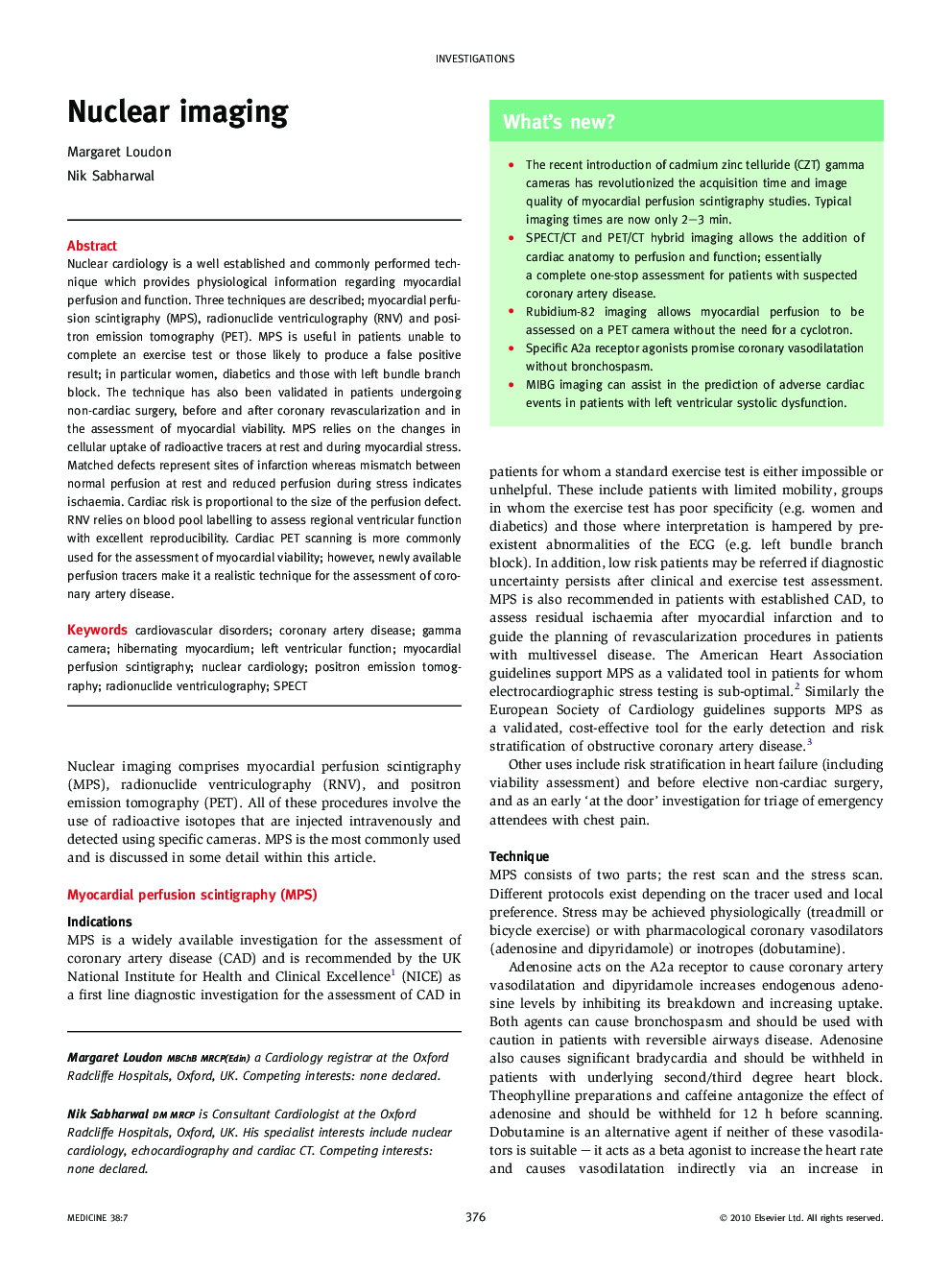| Article ID | Journal | Published Year | Pages | File Type |
|---|---|---|---|---|
| 3805166 | Medicine | 2010 | 4 Pages |
Nuclear cardiology is a well established and commonly performed technique which provides physiological information regarding myocardial perfusion and function. Three techniques are described; myocardial perfusion scintigraphy (MPS), radionuclide ventriculography (RNV) and positron emission tomography (PET). MPS is useful in patients unable to complete an exercise test or those likely to produce a false positive result; in particular women, diabetics and those with left bundle branch block. The technique has also been validated in patients undergoing non-cardiac surgery, before and after coronary revascularization and in the assessment of myocardial viability. MPS relies on the changes in cellular uptake of radioactive tracers at rest and during myocardial stress. Matched defects represent sites of infarction whereas mismatch between normal perfusion at rest and reduced perfusion during stress indicates ischaemia. Cardiac risk is proportional to the size of the perfusion defect. RNV relies on blood pool labelling to assess regional ventricular function with excellent reproducibility. Cardiac PET scanning is more commonly used for the assessment of myocardial viability; however, newly available perfusion tracers make it a realistic technique for the assessment of coronary artery disease.
